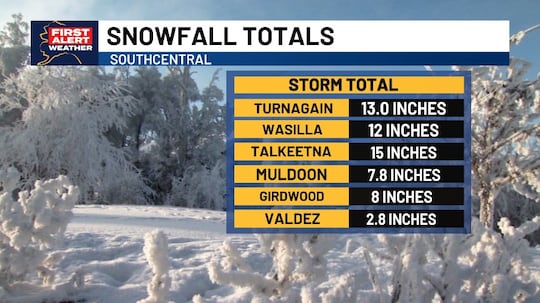Alaska
Todd Lindley: Alaskans vs. the carbon communists

By TODD LINDLEY
All too often, our elected leaders are democratically elected but then abandon the people either in pursuit of greater power, or–rather than resist the relentless pressure from unelected bureaucrats–they succumb to it. In Alaska, voters fortunately have a choice: we seize the opportunities we have built for ourselves and lead the world, or we bow to foreign powers.
In his book Technocracy: The Hard Road to World Order, Robert Wood describes the hijacking of American’s altruistic concern for the environment by those seeking to destroy America. Stating that the modern anti-carbon movement has “little regard for nature or people”, he exposes the roots of a global agenda to wipe out American success–which is the Trilateral Commission through the United Nations. The United Nations has become, in his words, “… a proxy for this group and the universal driving force to implement its policies.” We know these policies all too well because they are written down for the world to see. The problem is, our leaders are becoming unwitting “apologists” for our wealth-creating economy, and abdicating to foreign influence.
Governor Dunleavy, for example, is by most accounts a conservative and popular Governor, but what is he doing? His policies are showcased in the inaugural Alaska Standard Sustainability Report. The UN Sustainable Development Goals (SDGs) are front and center of his policies and lays the foundation for his energy programs in our great state. During his 2023 State of the State, he lamented the “billionaires from Davos” use Alaska as their playground. Yet, after the roll out of the Alaska Sustainability Report in May of 2023, Governor Dunleavy was invited by these same billionaires to visit Berlin, Germany. In front of a crowd of private equity investors he gave the keynote address during the Environmental, Social, and Governance (ESG) Summit describing the Alaska State Constitution as the Alaska Standard. He states “the Alaska Standard was ratified by the people of Alaska in 1959. When Alaska drew up its constitution it became a state long before the recent standard based movements we know by acronyms as ESG, SDG, and DEI came along. In ’59 we put much of what we talk about today in our constitution … we also hear a lot about sustainability and Alaska was ahead of the world when the framers of our constitution took this into account as well!” Simply put, our conservative Republican Governor is advocating for ESG in a foreign country on behalf of an oil producing US state. A political oxymoron if there ever was one!
Make no mistake, there is nothing sustainable about the United Nations SDGs. In a heavy, carbon production and utilization state, there is no such thing as net zero either. Just as we saw with the COVID pandemic, the rules can be changed, the data can be manipulated, and ambiguity in interpretation leaves too much latitude for an ‘expert’ to weigh in with no accountability. Carbon and CO2 are vital elements to the flourishing of life. To claim that reducing carbon for the sake of the climate is a lie and needs to be stopped.
The Alaska Legislature had their chance to stop the lie in 2023 but let revenue get in the way of critical thinking. With the allure that “some experts claim we could make billions of dollars” the Alaska Legislature removed the speed bumps for Governor Dunleavy to implement the Sustainable Development Goals in Alaska initially via a Carbon Offset Program. This legislation allows an entity to lease state forest land for a period up to 55 years so a company can pollute somewhere else on the planet. Even worse, the Native Corporations were presented as a model example of the millions of dollars they make on Carbon Offsets. They now lease their land for an indeterminate period of time to companies like Meta and Google. What would the Sealaska Shareholders say about the carbon offset revenues?
Fast forward to today and this upcoming legislative session. The Department of Natural Resources will likely make one more attempt at some unfinished business to pass a version of their ‘Storage Bill’ for the purpose of Carbon Sequestration. There will be rehashed discussions on the economic benefit of capturing carbon from the air or from the natural gas production and storing it in the ground. The claim is that companies want to store their carbon here and if they cannot they will take their money elsewhere. It’s funny to listen to these titans of industry make this claim to learn that the only financial incentive a company has to pursue carbon sequestration is the 45Q Federal Tax Credit. Not a business driver to increase oil production but a federal tax credit that is paid on a per ton basis of carbon dioxide injected.
An important reminder to the citizen, the carbon offset legislation included a provision to advance the application for Class VI well primacy from the EPA, an amendment snuck in at the last minute. Legislators and lobbyists argued that Alaska needs primacy for Class VI wells, which are for geologic storage only by the way, to store CO2. However, if a company wanted to inject CO2 today, they can apply to the EPA on their own for geologic storage. More importantly, they can also take advantage of the primacy Alaska has for Class II wells which are customarily used for enhanced oil recovery. These companies know and as was presented during the last session, the 45Q is due to run out January 1, 2033. Time is of the essence if a company is to pursue carbon sequestration for the gold rush of tax credits. The obvious questions should be, why are we not doing enhanced oil recovery with our CO2 today? Are federal tax credits for sequestration more profitable than producing oil using enhanced oil recovery?
These are simple questions that have yet to be answered. Alaskans should also know that the legislature didn’t believe it was necessary for any of the revenues to be set aside in the Permanent Fund for the benefit of the people. Senator Jesse Kiehl of Juneau even stated that if “the CO2 is stored in trees, the trees are a replenishable resource… and we don’t put money from replenishable resources in to the Permanent Fund.”
Now, Alaskans are left with entities, foreign to the state leasing public lands for 55 years, through a third party where the legislature has no regulatory oversight, to store a “worthless” substance in our trees and under our lands, for what? If that is not enough, the discussion of a gas shortage in the Cook Inlet should raise eyebrows. Are the experts that claim we will make billions off of low or no carbon resources the same experts evaluating the reserves in the Cook Inlet?
Citizens may be thinking that this is all too crazy to be connected in any way but go back to the beginning of this story. Climate change will be the mechanism by which a fundamental transformation of the forms of commerce will take place, namely through ESG. If the United Nations were a proxy to implementing the policies of the Trilateral Commission, is Governor Dunleavy a proxy to implementing David Rubensteins policies on Capitalism in Transition?
Todd M Lindley, PE is an energy and engineering professional in Alaska and VP of Alaska Gold Communications, Inc. Contact him @TMLindley_AK on X (Formerly Twitter).

Alaska
Alaska delegation mixed on Venezuela capture legality, day before presidential war powers vote

ANCHORAGE, Alaska (KTUU) – Alaska’s congressional delegation had mixed reactions Wednesday on the legality of the Trump administration’s actions in Venezuela over the weekend, just a day before they’re set to vote on a bill ending “hostilities” in Venezuela.
It comes days after former Venezuelan Nicolás Maduro was captured by American forces and brought to the United States in handcuffs to face federal drug trafficking charges.
All U.S. Senators were to be briefed by the administration members at 10 a.m. ET Wednesday, including Secretary of State Marco Rubio and Secretary of Defense Pete Hegseth, according to CBS News.
Spokespersons for Alaska Sens. Lisa Murkowski, R-Alaska, and Dan Sullivan, R-Alaska, say they were at that meeting, but from their responses, the two shared different takeaways.
Sullivan, who previously commended the Trump administration for the operation in Venezuela, told KDLL after his briefing that the next steps in Venezuela would be done in three phases.
“One is just stabilization. They don’t want chaos,” he said.
“The second is to have an economic recovery phase … and then finally, the third phase is a transition to conduct free and fair elections and perhaps install the real winner of the 2024 election there, which was not Maduro.”
Murkowski spokesperson Joe Plesha said she had similar takeaways to Sullivan on the ousting of Maduro, but still held concerns on the legality.
“Nicolás Maduro is a dictator who led a brutally oppressive regime, and Venezuela and the world are better places without him in power,” Plesha said in a statement Wednesday. “While [Murkowski] continues to question the legal and policy framework that led to the military operation, the bigger question now is what happens next.”
Thursday, the Senate will decide what happens next when they vote on a war powers resolution which would require congressional approval to “be engaged in hostilities within or against Venezuela,” and directs the president to terminate the use of armed forces against Venezuela, “unless explicitly authorized by a declaration of war or specific authorization for use of military force.”
Several House leaders have also received a briefing from the administration according to CBS News. A spokesperson for Rep. Nick Begich, R-Alaska, said he received a House briefing and left believing the actions taken by the administration were legal.
“The information provided in today’s classified House briefing further confirmed that the actions taken by the Administration to obtain Maduro were necessary, time-dependent, and justified; and I applaud our military and the intelligence community for their exceptional work in executing this operation,” Begich said in a statement.
Looming vote
Sen. Tim Kaine, D-VA, authored the war powers resolution scheduled for debate Thursday at 11 a.m. ET — 7 a.m. AKST.
It’s a resolution which was one of the biggest topics of discussion on the chamber floors Wednesday.
Sen. Rand Paul, R-KY, said on the Senate floor Wednesdya that the actions taken by the administration were an “act of war,” and the president’s capture of Maduro violated the checks and balances established in the constitution, ending his remarks by encouraging his colleagues to vote in favor of the resolution.
“The constitution is clear,” Paul said. “Only Congress can declare a war.”
If all Democrats and independents vote for the Kaine resolution, and Paul keeps to his support, the bill will need three more votes to pass. If there is a tie, the vice president is the deciding vote.
“It’s as if a magical dust of soma has descended through the ventilation systems of congressional office buildings,” Paul continued Wednesday, referring to a particular type of muscle relaxant.
“Vague faces in permanent smiles and obedient applause indicate the degree that the majority party has lost its grip and have become eunuchs in the thrall of presidential domination.”
Legality of actions under scrutiny
U.S. forces arrested Maduro and his wife, Cilia Flores, from their Caracas home in an overnight operation early Saturday morning, Alaska time. Strikes accompanying the capture killed about 75 people, including military personnel and civilians, according to U.S. government officials granted anonymity by The Washington Post.
Maduro pleaded not guilty Monday in a New York courtroom to drug trafficking charges that include leading the “Cartel of the Suns,” a narco-trafficking organization comprised of high-ranking Venezuelan officials. The U.S. offered a $50 million reward for information leading to his capture.
Whether the U.S. was legally able to capture Maduro under both domestic and international law has been scrutinized in the halls of Congress. Members of the administration, like Secretary of State Marco Rubio, have been open in defending what they say was a law enforcement operation carrying out an arrest warrant, The Hill reports. Lawmakers, like Paul or Sen. Chuck Schumer, D-NY, say the actions were an act of war and a violation of the constitution.
While the president controls the military as commander in chief, Congress constitutionally has the power to declare wars. Congressional Democrats have accused Trump of skirting the Constitution by not seeking congressional authorization before the operation.
Murkowski has not outright condemned or supported the actions taken by the administration, saying in a statement she was hopeful the world was safer without Maduro in power, but the way the operation was handled is “important.”
Sullivan, on the other hand, commended Trump and those involved in the operation for forcing Maduro to “face American justice,” in an online statement.
Begich spokesperson Silver Prout told Alaska’s News Source Monday the Congressman believed the operation was “a lawful execution of a valid U.S. arrest warrant on longstanding criminal charges against Nicolás Maduro.”
The legality of U.S. military actions against Venezuela has taken significant focus in Washington over the past several months, highlighted by a “double-tap” strike — a second attack on the same target after an initial strike — which the Washington Post reported killed people clinging to the wreckage of a vessel after the military already struck it. The White House has confirmed the follow-up attack.
Sullivan, who saw classified video of the strike, previously told Alaska’s News Source in December he believed actions taken by the U.S. did not violate international law.
“I support them doing it, but they have to get it right,” he said. “I think so far they’re getting it right.”
Murkowski, who has not seen the video, previously said at an Anchorage press event the takeaways on that strike’s legality seem to be divided along party lines.
“I spoke to a colleague who is on the Intelligence Committee, a Republican, and I spoke to a colleague, a Democrat, who is on the Senate Armed Services Committee … their recollection or their retelling of what they saw [was] vastly different.”
See a spelling or grammar error? Report it to web@ktuu.com
Copyright 2026 KTUU. All rights reserved.
Alaska
National Native helpline for domestic violence and sexual assault to open Alaska-specific service
Alaska
Dozens of vehicle accidents reported, Anchorage after-school activities canceled, as snowfall buries Southcentral Alaska

ANCHORAGE, Alaska (KTUU) – Up to a foot of snow has fallen in areas across Southcentral as of Tuesday, with more expected into Wednesday morning.
All sports and after-school activities — except high school basketball and hockey activities — were canceled Tuesday for the Anchorage School District. The decision was made to allow crews to clear school parking lots and manage traffic for snow removal, district officials said.
“These efforts are critical to ensuring schools can safely remain open [Wednesday],” ASD said in a statement.
The Anchorage Police Department’s accident count for the past two days shows there have been 55 car accidents since Monday, as of 9:45 a.m. Tuesday. In addition, there have been 86 vehicles in distress reported by the department.
The snowfall — which has brought up to 13 inches along areas of Turnagain Arm and 12 inches in Wasilla — is expected to continue Tuesday, according to latest forecast models. Numerous winter weather alerts are in effect, and inland areas of Southcentral could see winds up to 25 mph, with coastal areas potentially seeing winds over 45 mph.
Some areas of Southcentral could see more than 20 inches of snowfall by Wednesday, with the Anchorage and Eagle River Hillsides, as well as the foothills of the Talkeetna Mountain, among the areas seeing the most snowfall.
See a spelling or grammar error? Report it to web@ktuu.com
Copyright 2026 KTUU. All rights reserved.
-

 News1 week ago
News1 week agoFor those who help the poor, 2025 goes down as a year of chaos
-

 Detroit, MI5 days ago
Detroit, MI5 days ago2 hospitalized after shooting on Lodge Freeway in Detroit
-

 Dallas, TX3 days ago
Dallas, TX3 days agoDefensive coordinator candidates who could improve Cowboys’ brutal secondary in 2026
-

 Technology2 days ago
Technology2 days agoPower bank feature creep is out of control
-

 Midwest1 week ago
Midwest1 week agoMcDonald’s locks doors to keep out individuals who present ‘a risk’ in crime-ridden Minneapolis area
-

 West1 week ago
West1 week agoApex predator threatening Northwest salmon sparks rare bipartisan push to ‘kill more’
-

 Southwest1 week ago
Southwest1 week agoMissing 19-year-old Camila Mendoza Olmos believed to be ‘in imminent danger,’ Texas sheriff says
-

 Health4 days ago
Health4 days agoViral New Year reset routine is helping people adopt healthier habits























